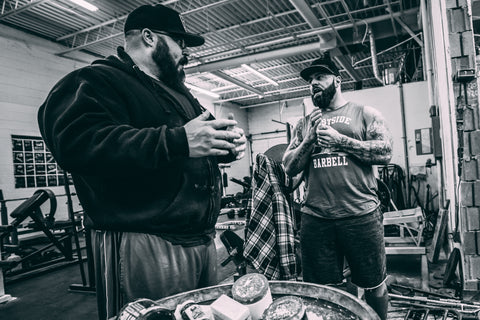Max Effort: Proper Exercise Selection and Implementation

Previously, we discussed the importance of max-effort training and how training in high-intensity ranges triggers greater motor unit activation. Training in optimal intensity ranges is half the battle; the other half relies on proper exercise selection and organization within a training plan.
The law of accommodation dictates that an athlete must experience new training stimuli regularly or risk decreasing their rate of performance improvement. With this in mind, you begin to see the importance of exercise selection and organization. Failure to introduce a new stimulus or a disordered approach to exercise selection and scheduling will ultimately lead an athlete to failure.
Unfortunately, it has become a common belief that as an athlete progresses through a strength training program, they should expect diminishing returns regarding performance improvement. This misconception works off of the idea that an athlete only has so much strength and speed to gain before they hit their genetic limitations.
While genetic limitations exist, and an athlete's ceiling for strength, speed, and skill improvement is dictated by their genetics, a coach has rarely worked with an athlete to the point where their genetic limit for performance improvement has been met. Typically, this idea is pushed by coaches who do not understand the importance of exercise selection and exposure to proper intensity levels. Instead of these coaches auditing their methods and looking for ways to improve, they blame nature.
If you have reached a point where gains have begun to slow and are looking for a way to get back on track, continue reading. Below, I will go over a simple approach that will expose you to optimal levels of training intensity while avoiding accommodation entirely.
Selection and Scheduling of Max Effort Exercises
Two max-effort training days will occur each week when utilizing the Conjugate Method. To explain this strategy, we will focus on max effort lower. However, keep in mind that the process used to select and organize these max effort lower exercises can be directly applied to max effort upper exercise selection.
To begin your first month of training, you will select four max effort lower exercises. Coaches or athletes should select these exercises based on known weaknesses. However, if you are new to training or have no idea what your weaknesses are, you can choose four basic exercises to start with. We will assume we are programming for a new athlete with no known weaknesses for this article.
Here is what month one of max-effort lower training would look like:
Week 1 - Front squats, working up to a top set of three around 90-95%
Week 2 - Rack pull below the knee, working up to a max effort single
Week 3 - Cambered bar goodmornings, working up to a top set of five around 80-85%
Week 4 - Competition deadlift, working up to a max effort single
The above max effort exercise rotation includes three weeks of max-effort training focused on improving the deadlift, with the fourth week being used to test the deadlift. Once this four-week rotation concludes, a new four-week rotation begins.
Here is what month two of max-effort lower training would look like:
Week 1 - SSB goodmornings, working up to a top set of three around 90-95%
Week 2 - Anderson style cambered bar squat, working up to a max effort single
Week 3 - Mat deadlifts, working up to a top set of five around 80-85%
Week 4 - Competition squat, working up to a max effort single
You see above eight total max effort training sessions, six of them being used to build, two of them being used to test. Each week introduces a new training stimulus, while a consistent intensity flow is followed. To think of this correctly, consider month one A and month two B.
Realistically, you can run this A-B style of programming continuously for at least 16 weeks up to 24 weeks before worrying about changing anything. Once the time comes to make some adjustments, minor adjustments like changing out the specialty bar used, adding accommodating resistance, or running back through the exercises beltless will do. Once you have exhausted those avenues, you can select new exercises entirely.
Keep in mind that aside from exchanging the lower exercises for upper exercises, the organization of top set reps and percentages remain the same for upper and lower.
Additional Guidelines
The above exercises represent what would be considered optimal exercise rotations for the average lifter who needs improvement in all areas of lower body strength. This does not mean the selected exercises are the right ones for you.
As far as the rep and percentage guidelines go, consider those fixed. However, when it comes to exercise selection, you should choose exercises that directly target known weaknesses limiting your success with competition-style lifts.
As mentioned earlier, you can run your A-B max-effort rotation up to 24 weeks before you would have to start modifying or selecting new exercises to avoid accommodation. Be sure to avoid constant changing of exercises. It is best to extract the maximum strength gains from the currently chosen exercises before introducing new stimuli.
There are many ways to approach max-effort program design, and this is just one. However, I can personally attest to the effectiveness of this strategy. I have used this rotation myself, and the lifters and athletes I work with have had great success using it as well. Keep in mind that this is just one part of the max effort equation; the main work is essential, but your accessory work is just as important.
Look out for an article covering how to select and build accessory exercise rotations for max effort training days coming soon.
Sources:
Simmons, L. (2007). Westside Barbell Book of Methods. Westside Barbell.
Verkhoshansky, Y., & Siff, M. C. (2009). Supertraining. Verkhoshansky.
Zatsiorsky, V. M., & Kraemer, W. J. (2006). Science and Practice of Strength Training. Human Kinetics.





